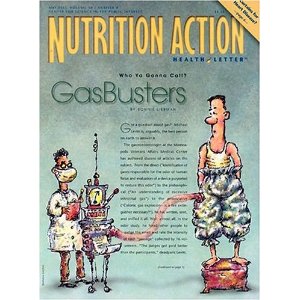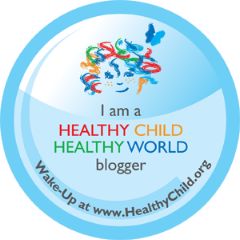If You Read Only One Nutrition Publication

I urge you to make it this one.
I know you’re not all as obsessed with nutrition as I am. But do you have an appetite for a little more information? Something practical and easy to read? Something that empowers you by providing information on current hot topics and foods that “real” people eat like products from conventional supermarkets and items available at chain restaurants? I have a recommendation for you . . . the Nutrition Action Healthletter, published by the Center for Science in the Public Interest (CSPI). If you’re going to read one health/nutrition periodical, this should be the one.
First, a little background. CSPI was founded in 1971 as an independent non-profit consumer health group. You may never have heard of CSPI, but you’ve felt their impact. From their website:
CSPI’saccomplishments include leading the efforts to win passage of laws that require Nutrition Facts on packaged foods (and, later, to include trans fat on those labels), define the term “organic” for foods, and put warning notices on alcoholic beverages. CSPI also conducted eye-popping studies on the nutritional quality of restaurant meals and movie theater popcorn, helped to increase funding for the government’s food safety inspections and nutrition and physical activity programs, and spurred new policies in some cities and states to remove soda and junk foods from schools. CSPI also helped New York City adopt the nation’s first ordinances to ban trans fat from restaurants and list calorie information on menus and menu boards, and is working with other cities and states on similar measures.
CSPI doesn’t accept government or industry funding, and the Nutrition Action Healthletter accepts no advertising, so what you’re getting in this pint-sized publication (issues top out at around 15-20 pp. maximum) is unvarnished and unbiased. Period.
Why should you spend $24 for 10 issues? Because it’s readable and relevant. Take, for example, the April, 2010 issue. The cover story is about why Americans need to cut down on salt, along with practical advice on how to do it. You’ll see ways to “defuse a salt mine” – namely, how to add ingredients to a typical Chinese take-out dish or the boxed prepared food you get at the supermarket to bring down the sodium content per serving. You’ll see a side-bar with popular menu items from large chain restaurants (think Panera, Olive Garden, Chipotle) along with their sodium content. You will be astounded.
Other features this month include one on probiotics. The article cuts through the advertising hype and gives you the skinny on how to spend your money on probiotic foods and supplements. Another article reveals the sugar and calorie-content of coffee drinks and popular menu items at major chains like Starbuck’s, McD’s and Dunkin’ Donuts. Included here are helpful charts with the calorie, sat. fat, added sugar and caffeine content of popular menu items, along with suggestions for which are considered by CSPI to be a “Best Bites.” You could literally cut these pieces out and tuck ‘em in your wallet for reference if you’re a frequent flyer at any of these chains.
Interspersed with the big articles are news-bites on various hot-button nutrition issues, along with the monthly “Healthy Cook” feature which serves up inspiration for quick ‘n’ easy whole-foods cooking.
I’ve been a subscriber for something like 15 years, and I’m paid up through 2012. I pay for my subscription, and I haven’t been approached by anyone to endorse this publication. I’m inspired to recommend it to you only by my respect for the CSPI and my adoration of the Healthletter’s content. If you’re looking for some nutrition information to chew on, but not too much, this is the pub. for you. Find out more here.
© 2010, Sarah. All rights reserved.
-
Sara
-
http://tomatotots.blogspot.com megan
-
http://www.pink-apron.com Kelly










